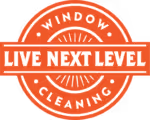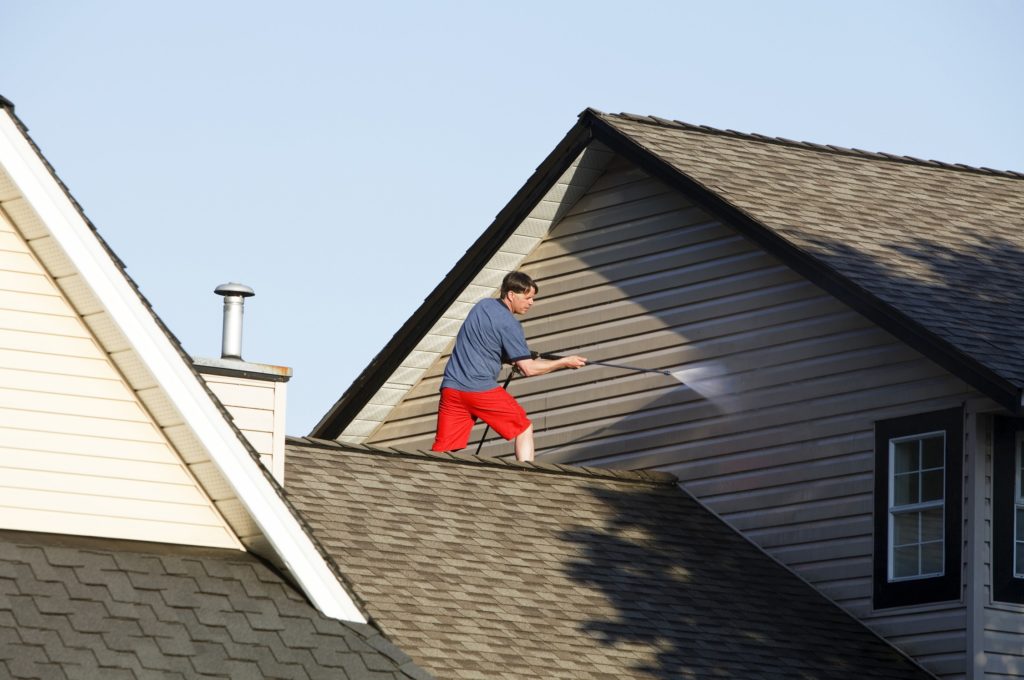Exterior painting is a popular home improvement project that requires considerable effort and attention to detail. It is essential that the surface of the exterior be clean and free from dirt, grime, mildew, mold, algae and other contaminants prior to painting.
Pressure washing provides an effective means of cleaning these surfaces and is critical for achieving a successful outcome with exterior painting. This article will discuss the benefits of pressure washing and compare it to other cleaning methods as well as outline how to properly prepare for pressure washing, demonstrate various techniques employed when pressure washing as well as provide guidance on evaluating the results.
Benefits of Pressure Washing
Pressure washing offers a range of benefits to surfaces prior to painting, including the removal of dirt, mold, mildew, and debris. Through the use of pressurized water jets or chemical cleaning agents, pressure washing can effectively remove deep-seated dirt and grime that simple scrubbing is unable to reach.
Pressure washing also aids in removing certain types of paint such as chalk-based paints which are difficult to remove with manual scrubbing. Furthermore, chemical use for pressure washing can be beneficial depending on the surface type being treated; for example, using a mild detergent may reduce the chance of damaging certain materials while still providing effective results.
The quality of both the water used and equipment employed during pressure washing is essential for achieving desired outcomes and reducing potential damage to surfaces or materials. When using pressurized water jets, quality nozzles should be utilized that are specifically designed for pressure washers so that an even distribution of water is achieved across all areas being washed.
In addition, care should be taken when selecting water sources due to the possibility of hard water containing high levels of dissolved minerals which could lead to staining if not treated appropriately beforehand.
When done correctly prior to painting exterior surfaces, pressure washing can help ensure better adhesion and longevity by removing excess dirt particles which might otherwise prevent paint from properly bonding with surfaces underneath. With this process also allowing for a more thorough inspection before painting begins it allows any minor repairs or defects in substrates such as wood siding or brick walls to be identified earlier on in order to achieve superior results when it comes time for actual application.
Pressure Washing vs. Other Cleaning Methods
Power-washing is an effective cleaning technique compared to other methods for preparing an exterior surface for painting. It uses high-pressure water spray, typically between 1500 and 4000 psi, to remove dirt, dust, mold, mildew, and other contaminants from the outside of a building or home. Power washing can be used safely on many types of surfaces such as siding, decks, bricks and mortar joints. While chemical cleaning agents can also be used to clean the same areas they are more expensive than power washing and often leave behind residual residue that must then be removed with additional scrubbing or pressure washing.
Power-washing is a much faster process than hand scrubbing when it comes to removing caked on dirt or grime from an exterior surface in preparation for painting. It can blast away years of built up sediment in minutes where as hand scrubbing could take hours.
Furthermore, power-washing does not require any special tools or equipment beyond the pressure washer itself making it a cost effective solution when prepping large areas for painting.
The power of the water jet cleans deep without damaging the underlying material so there is no fear of gouging into wood or brick when using a pressure washer correctly. With proper technique it can even reach difficult spots that may have otherwise been inaccessible by manual means such as under ledges or around window frames and tight corners.
Pressure washing provides an easy way to get professional looking results without breaking the bank or requiring extra labor costs associated with intensive manual scrubbing techniques.
Preparing for Pressure Washing
It is essential to properly prepare the surface prior to commencing a pressure washing project in order to ensure optimal results. DIY tips such as removing any loose objects from the area, taping off areas that need not be pressure washed, and wearing protective gear can greatly increase the efficiency of the process. Additionally, environmental concerns must be taken into account when preparing for a pressure washing project; this includes understanding local regulations regarding water usage and avoiding hazardous chemicals or detergents during the process.
The first step in properly preparing for a pressure washing project is assessing what kind of surface needs to be cleaned. Different surfaces require different levels of cleaning power; it is important to select an appropriate nozzle setting that will produce enough power without damaging the surface being cleaned. For example, on delicate surfaces like wood decks, using too much power from the pressure washer could strip away some of its finish and leave behind unsightly marks or stains.
Furthermore, it is important to check all hoses and attachments before beginning any work with a pressure washer; this includes checking for any leaks or broken components that may have occurred during storage or transportation. Additionally, it is essential to check all safety precautions are being observed at all times while operating such machinery – these include wearing protective clothing such as goggles or face masks and keeping children away from working areas at all times.
| Benefit/Tip | Action |
|—————|——————————————————–|
| Remove Objects| Before starting, remove any loose objects from working area |
| Tape Off Areas| Tape off areas that need not be pressure washed |
| Wear Gear | Wear goggles/face mask & other protective gear |
| Check Surface | Assess what kind of surface needs cleaning |
| Check Nozzle Settings | Select appropriate nozzle setting |
| Check Hoses & Attachments | Check all hoses/attachments before starting |
By taking these steps into consideration prior to commencing a pressure washing project, one can ensure optimal results with minimal risk involved throughout the entire process. With proper preparation and cautionary measures put in place beforehand, one can rest assured that their exterior painting job will yield beautiful results with little effort required afterwards.
Pressure Washing Techniques
Using the appropriate techniques can be paramount to achieving desirable results when pressure washing any surface.
There are two main power washer types, which include gas and electric. Gas power washers typically produce higher water pressures than electric, allowing for more efficient cleaning of hard surfaces that require a higher level of force to remove dirt and debris. Electric power washers are known for being lighter in weight and easier to transport than gas models, making them a great choice for small-scale jobs or those who need to move their equipment frequently.
The water temperature used with pressure washing is also key for achieving the desired results. Cold water pressure washing is recommended as it’s great for removing dirt and grime without causing damage to the surface that requires cleaning. Hot water pressure washing should only be used on certain materials such as concrete or asphalt that have heavy build-up of grease or oil residue, as it can help break down these substances more effectively compared to cold water alone.
When considering which type of power washer and temperature settings to use, it’s important to keep in mind the specific needs of the project at hand in order to achieve optimal results with minimal risk of inadvertent damage.
With careful consideration given towards choosing the right tools and techniques, one can ensure success when performing any exterior painting job following a thorough pressure wash preparation process.
Evaluating the Cleaning Results
After pressure washing, the surface should be inspected for any dirt or debris and any remaining stains. If there are any issues, they should be addressed by cleaning them with additional pressure washing techniques before proceeding to prepare the surface for painting.
Once all visible debris has been removed, it is important to determine if there is a need for further cleaning to ensure that the surface can accept paint properly and guarantee a uniform finish.
Inspecting the surface after pressure washing
Examining the surface post-pressure washing is essential for ensuring optimal adhesion of the paint.
Pressure washing eliminates dirt, debris, and built-up grime that can create a layer of separation between the paint and underlying surface.
To properly evaluate the cleaning results, it’s important to inspect each area for any signs of remaining residue or damage caused by the high pressure stream used during pressure washing.
It’s especially important to check corners and hard-to-reach areas where dirt tends to accumulate as these areas can be easily overlooked.
Surface damage created by pressure washing is usually minimal, however if any damage is detected it should be addressed before painting begins.
Small dents or divots in wood surfaces may need to be filled with putty or sanded down while masonry surfaces can often simply be patched up with mortar.
Paying attention to detail when inspecting the surface will ensure that all potential issues are resolved prior to painting and will ultimately result in a better finished product.
Fixing any problems
Transitioning from the previous subtopic of inspecting the surface after pressure washing, it is important to recognize and address any problems in order to ensure that the exterior paint job will be successful. Fixing any underlying issues prior to painting is essential for a professional result and can prevent major deterioration causes down the line.
To ensure a quality paint job, there are several preventative steps that must be taken before beginning:
* Thoroughly inspect the surface for cracks, holes or other damage.
* Repair any existing damage with a high-quality filler or patch.
* Sand down all repaired areas until smooth.
* Clean away any debris or dust created from repairs.
* Prime all newly repaired surfaces prior to painting.
Preparing the surface for painting
Cleansing the surface of any dirt and debris is a vital step in preparing for painting, as it creates an ideal foundation on which to apply paint. Pressure washing is the most efficient way to remove these elements from exterior surfaces, making sure that they are properly prepared for painting. Not only does this method cleanse surfaces of dirt and debris, but it also helps to identify any potential issues that may not be visible when the surface is dry. This can help inform decisions about paint selection and other necessary steps in the preparation process.
| Preparation Step | Benefits |
| :—: | :—: |
| Pressure Washing | Cleanses surfaces of dirt/debris<br>Identifies potential issues before painting |
| Paint Selection | Creates a better finish <br>More durable than cheap paints |
Pressure washing provides several advantages that make it an essential part of surface preparation before painting. With the right pressure washer and technique, homeowners can achieve a cleaner look with better results than manual cleaning methods. Additionally, by taking into account factors like paint selection, a homeowner will be able to create a more durable finish with their chosen paint while saving time and money in the long run.
Conclusion
Pressure washing is an effective and efficient method of cleaning before painting the exterior of a building. By removing dirt, debris, mold, mildew and other contaminants from the surface, pressure washing can significantly increase the quality of the finished product.
This in turn ensures that paint adheres better to the surface which can help it last longer and look more attractive for years to come. On average, pressure washing a home’s exterior saves homeowners time and money by reducing labor costs associated with prepping surfaces for painting by up to 25%.
Pressure washing is clearly an important step in preparing for any exterior painting project.




